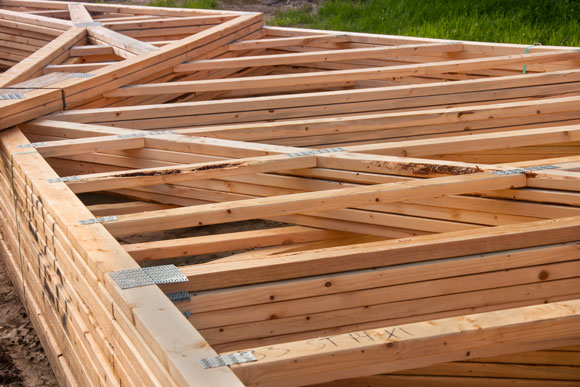Offsite construction has been around for years, but interest in this construction method has grown rapidly in the past decade. Benefits of offsite construction include decreased costs compared to conventional construction methods, shortened project schedules, reduced waste and safer working conditions.
Offsite construction typically comes in two forms: modular and prefabricated. With modular construction, entire rooms can be built offsite in a controlled environment and come complete with MEP, finishes and fixtures already installed. They can be rooms as small as bathrooms or modules can be fitted together onsite to create larger spaces like apartment units. The modular units are transported to the construction site and then inserted and attached to the structural frame.
With prefabricated construction, building components are built offsite and then assembled or installed once they have been transported to the construction site. Prefabricated building components cover everything from framing, internal and external wall panels, door and window assemblies, floor systems and multi-trade racks that are panels with all the ductwork, wiring and plumbing packaged together.
Offsite construction is typically used on projects with a repetitive floorplans or layouts in their design such as apartment buildings, hotels, hospitals, dormitories, prisons and schools. They also are a smart option in urban areas where site footprints are smaller and laydown and staging areas are reduced.
For most clients of offsite construction, the big draw is the condensed construction schedule. Getting a building operational in a shorter timeframe means clients generating revenue sooner, whether that’s heads in beds in a hotel or serving up burgers at a fast food joint. For schools and dormitories, it means being able to have a building up and running before the start of the next school year.
Quick service restaurants like Taco Bell, Starbucks, Human Beans and Checkers have all used offsite to quickly deploy and open new locations. Taco Bell, Starbucks and Checkers, along with sister chain Rally’s, have also used repurposed shipping containers at some of their locations.
Earlier this year, hotel giant Marriott committed to having 13% of their hotels built this year using modular construction. That means that 50 of the hotel deals Marriott expects to sign this year will be built with prefabricated modular guestrooms or bathrooms.
Marriott already has a handful of modular projects that are completed or nearly completed like the Folsom Fairfield Inn & Suites in California, a Courtyard in Washington and two AC Hotels, one in Oklahoma City and the other in Chapel Hill, NC. This commitment from Marriott helps put offsite construction in the limelight and, if successful, could lead to more hotel chains following suit.
Want more proof that offsite construction is finally going mainstream? Katerra, a start-up formed in 2015, is already valued at over $1 billion. The company is a tech-savvy, one-stop shop for offsite construction. They handle design, material sourcing and supply, prefabrication and onsite construction of a project. They are also looking at how another big trend in construction, mass timber, can be incorporated into offsite construction.
With the modules and prefabricated components being constructed inside a factory, it eliminates weather delays caused by rain and snow that normally affects buildings constructed using conventional methods. Because the modules are constructed in a controlled environment in an assembly-line method, material waste and man-hours can be greatly reduced. Offsite construction also offers a safer approach since working at height is eliminated.
